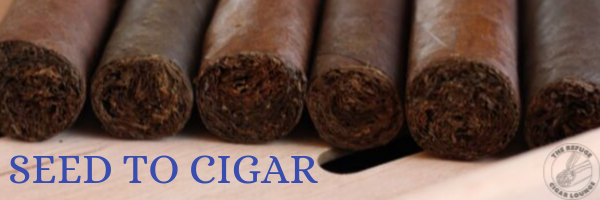Alright, our plants are still happily growing in their 45 day window in the tobacco fields. What could possibly go wrong? Well, actually quite a few things. However, we’re just going to take about the three most common: Blue Mold, Black Shank, Mosaic Virus and Lacioderma. Don’t those sound like a fun time?
Blue Mold is best described as the “AIDS” of the tobacco industry. Even under the watchful eye of the farmers, it can appear overnight. It scars the tobacco leaf beyond use and destroys the plant. It is a microscopic airborne spore that will start on the underside of the leaf. As long as the weather stays clear and dry, Blue Mold is not a problem. But lots of rain, colder days, and minimal sun equal the perfect storm for this issue and it can spread like a prairie wildfire.
Black Shank is fairly self-descriptive. It attacks the stem of the plant turning it black and destroying it completely. Mosaic Virus is when the leaves have a blue mottled appearance. Surprisingly, the way to fight both of these issues is to have the farmers wash their hands in milk before handling the seeds for replanting in the fields.
And then there is the most common nemesis, bugs. Let’s talk about Lacioderma, also known as the tobacco beetle. These fun guests lay their eggs in the tobacco leaves and about 3 weeks later emerges a worm that gorges itself on the tobacco leave before metamorphosing into a beetle the size of a pinhead and flying on to its next chapter in life.
Some years it is a wonder we have a tobacco industry at all with all that can go wrong in such a short amount of time.
Next week we will start talking about the many steps the tobacco leaves go through before becoming that amazing cigar currently in your hand.

